The Global Printing Label Market Size Is Expected To Reach $62.37 Billion By 2029
I. Development History of Printing Labels
The history of printing labels can be traced back to ancient civilizations when people began using various marks to identify items. However, with the continuous development of industrialization and commercialization, the application of printing labels has gradually become widespread and complex.

In the early 20th century, with the rise of packaging and retail industries, product printing labels became indispensable identification tools. They were used not only for product identification but also carried critical information such as prices, manufacturer details, and promotional content. The emergence of these printing labels greatly improved the efficiency and accuracy of product transactions.
Entering the 21st century, with technological advancements and diverse consumer demands, the functions and application areas of printing labels have further expanded. The introduction of logistics printing labels made it possible to track and trace goods, significantly improving the operational efficiency of the logistics industry. Simultaneously, the manufacturing and pharmaceutical industries have also imposed higher requirements on printing labels, such as ensuring the accuracy and traceability of product information to meet strict regulatory demands.
In recent years, with the development of digitalization and intelligent technologies, the printing label market has also welcomed new development opportunities. The application of digital printing technology has made it possible to meet customized printing label demands, while the application of technologies such as the Internet of Things (IoT) and big data has driven the digital and intelligent development of the printing label industry.
II. Main Application Fields
The development of the printing label market has always been closely related to the progress of various industries. Since the Industrial Revolution, with the flourishing of the commodity economy, the demand for printing labels, as an important component of products and their packaging, has been increasing.
In the retail industry, product printing labels have become a bridge connecting consumers and products. They carry basic information such as product prices and names and are important tools for merchants to display promotional information and attract consumers' attention.
The rise of the logistics industry has further driven the rapid development of the printing label market. Logistics printing labels ensure the accuracy and efficiency of the transportation process by providing accurate tracking and tracing information for goods, supporting the rapid development of the logistics industry.
The demand for printing labels in the manufacturing industry is also continuously increasing. Manufacturing printing labels can clearly identify product batches, production dates, and key information, helping manufacturers ensure product quality and safety, while also providing consumers with important purchasing references.
In the pharmaceutical industry, the importance of printing labels is self-evident. Pharmaceutical printing labels not only need to meet strict regulatory requirements but also ensure the accuracy and traceability of drug information to safeguard patient medication safety.
III. Market Trend Factors
With the rapid development of e-commerce, the printing label market is ushering in unprecedented growth opportunities. Here is a detailed analysis of several major aspects:
1. Impact of E-commerce on the Printing Label Market
The rise of e-commerce has made online shopping mainstream. According to the latest data, the global e-commerce market is expected to reach $5.14 trillion by 2024, with an annual growth rate of 15% since 2019. The compound annual growth rate of the Indian e-commerce market is expected to reach 30%, with a total merchandise value of $200 billion by 2026 and a market penetration rate of 12%. Last year, Australia's total consumer retail sales reached $310.29 billion, an increase of 9.7% from the previous year.
With the popularity of online shopping, the demand for printing labels has surged. These printing labels need to convey product information such as product names, prices, and barcodes more clearly and accurately. Although specific data on printing label quantity growth is difficult to obtain directly, it can be inferred that as the e-commerce market expands, the growth of the printing label market will be significant.
2. Impact of Automation and Intelligence Trends on the Printing Label Market
In automated production lines, printing labels are widely used to identify key information such as product batches and production dates. As the demand for automation and intelligence in the manufacturing industry increases, the application of printing labels on production lines will become more widespread.
The rise of intelligent logistics systems has made logistics printing labels a key component. By providing real-time tracking and tracing information, logistics printing labels greatly improve logistics efficiency and reduce operational costs. According to industry reports, the widespread application of automation and intelligent technologies is expected to further drive the growth of the printing label market.
3. Impact of Environmental Protection and Sustainability on the Green Printing Label Market
As environmental protection and sustainability become hot topics, more and more companies are focusing on environmental protection and sustainable development, driving the flourishing development of the green printing label market.
Green printing labels not only require the production process of the labels themselves to meet environmental standards, such as using recyclable materials, being degradable, and reducing waste, but also require the labels to convey environmental information about the product, such as organic certification and green production.
According to the latest research reports, as consumer demand for environmentally friendly products continues to grow, the scale of the green printing label market is also expanding. Although specific market scale data may vary depending on the region and research institution, overall, the green printing label market is growing rapidly.
IV. Global Label Printing Industry Market Analysis
According to a report by Mordor Intelligence, the global label printing market size is expected to reach $51.05 billion by 2024 and $62.37 billion by 2029, with a compound annual growth rate of 4.09% during the forecast period (2024-2029). With the continuous increase in the number of SKUs, the average job length and lifecycle of batch-produced products are shortening, and the regulatory content on printing labels is increasing. The demand from print label customers for more attractive brands is also rising. Additionally, the increasing demand for finished goods and the surge in disposable income are expected to drive the print label market during the forecast period.
V. Market Share
In the global printing label market, several major manufacturers such as Zebra Technologies, Honeywell, and SATO hold significant positions in the RFID printer and label fields with their superior technical strength and extensive market coverage. These manufacturers continuously meet the growing market demand through ongoing innovation and high-quality products.
According to the latest market share data, the top five manufacturers hold over 46% of the RFID printer and label market, indicating intense market competition. Among them, Zebra Technologies leads the market with its comprehensive product line and high-performance products. Honeywell and SATO also hold significant positions in the market with their technical strength and brand influence.
VI. Technical Trends
RFID printing labels, also known as electronic tags or radio-frequency tags, are a non-contact automatic identification technology. They consist of coupling components and chips, with each tag having a unique electronic code, allowing them to be attached to objects to identify target objects.
The primary function of RFID printing labels is to identify target objects and obtain relevant data through radio signals, achieving non-contact data exchange. In the printing label field, RFID technology is widely used in various scenarios such as inventory management, supply chain management, anti-theft, and identity verification.
Advantages of RFID Printing Labels
- High Security: RFID printing labels can be embedded in or attached to different shapes and types of products, and the read/write of label data can be password-protected to enhance data security.
- Fast Decoding Speed: RFID printing labels can be read immediately once they enter the magnetic field, and multiple labels can be processed simultaneously, achieving batch identification.
- Data Modifiability: The data on RFID printing labels can be modified through a programmer, giving the labels the function of an interactive portable data file.
- Large Data Capacity: The data capacity of RFID printing labels can be expanded according to user needs, with a maximum capacity of up to tens of kilobytes.
- Dynamic Real-time Communication: RFID printing labels and readers can dynamically communicate in real-time, achieving dynamic tracking and monitoring of objects to which the labels are attached.
- Long Identification Distance: RFID printing label data can be read without a light source, even through external packaging, with an effective identification distance of over 30 meters.
In terms of technical development, the application of RFID technology is gradually expanding. RFID technology brings higher identification accuracy and traceability to the printing label field by identifying targets and obtaining related data through wireless signals. For example, in the logistics industry, RFID technology can achieve real-time tracking and tracing of goods, significantly improving logistics efficiency.
Additionally, reversible/irreversible temperature indicator printing labels have also become popular products in the market. These printing labels can monitor the temperature conditions of products during transportation, storage, and handling. Once the temperature exceeds the set range, the labels will change, ensuring product quality and safety. This technology has a wide range of applications, especially in industries with strict temperature requirements such as food and pharmaceuticals, where it plays a crucial role.
VII. Conclution
In summary, major manufacturers in the global printing label market continuously meet new market demands through technological innovation and product upgrades. Meanwhile, the application of new technologies such as RFID and temperature indicator printing labels injects new vitality into market development.

